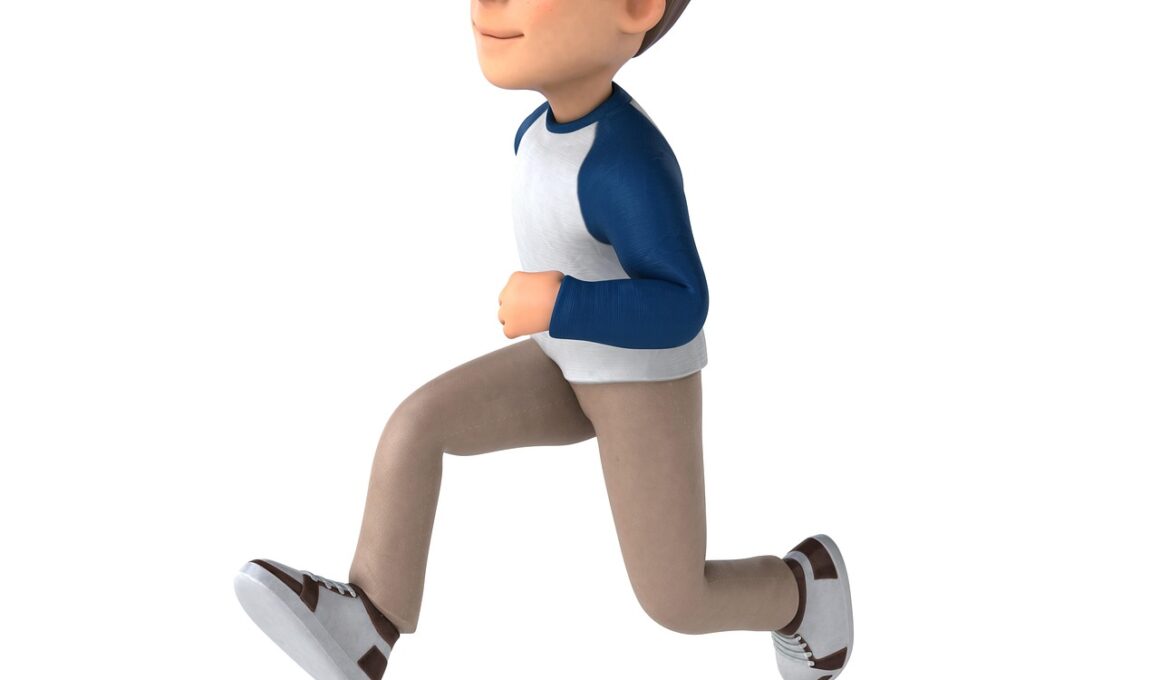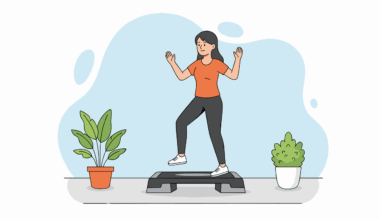Myths and Facts About HIIT Training in Youth Populations
High-Intensity Interval Training, or HIIT, involves short bursts of intense exercise followed by recovery periods. It’s often thought that HIIT is too intense for kids and teens, leading to the myth that they should stick to traditional workouts. However, research indicates that when appropriately designed and supervised, HIIT can be beneficial for youth. This training method improves cardiovascular fitness, increases endurance, and fosters a love for physical activity among younger populations. It’s essential to differentiate between myths and facts, as misconceptions can prevent young individuals from enjoying the numerous benefits of HIIT. For instance, the idea that HIIT requires access to specialized equipment is not entirely accurate. Many HIIT workouts can be performed using body weight, making them accessible to kids and teens. Furthermore, today’s youth can benefit from the social aspect of group HIIT sessions, enhancing motivation and adherence to fitness routines. Understanding the correct way to introduce HIIT is crucial, including setting appropriate intensity levels and ensuring a safe environment. This approach allows youth to develop essential fitness skills while preventing injury.
One common concern about HIIT for kids and teens is the potential risk of injury. While it’s true that any form of intense exercise carries some risk, the structured format of HIIT can effectively minimize injuries. Coaches and trainers specializing in youth fitness programming understand the importance of age-appropriate exercises. They focus on building strength, flexibility, and coordination, which are necessary for safe participation. Proper form and technique are emphasized—skills that are vital for any physical activity. Parents might worry that their children will experience burnout from intense sessions. Yet, the intermittent nature of HIIT, with recovery periods, allows kids to push hard without becoming exhausted. Moreover, research supports that varying the activities in HIIT keeps workouts engaging and fun, preventing monotony that often leads to disengagement. Additionally, setting realistic goals and encouraging a positive mindset can support long-term adherence. It’s advisable for parents and coaches to communicate openly about their children’s experiences, ensuring they enjoy the process without feeling overwhelmed. Ultimately, the risks can be effectively mitigated with proper planning and supervision.
Understanding Energy Systems for Youth
Energy systems development is essential when discussing HIIT for children and teens. Growing bodies utilize different energy systems compared to adults. For instance, children often rely more on the anaerobic system, which is engaged during short, high-intensity efforts. This makes HIIT training especially suitable for them, as it aligns with their natural energy output. Furthermore, youth have a remarkable ability to recover quickly, allowing them to engage in multiple intervals without excessive fatigue. Parents might be surprised to learn that incorporating HIIT into a fitness routine can help kids exceed traditional training benefits. Studies indicate that youth who participate in regular HIIT can achieve greater improvements in aerobic capacity and body composition than those who perform steady-state exercises. However, the focus should remain on enjoyment rather than competition. This will encourage kids to adopt lifelong healthy habits while developing functional skills. Additionally, trainers can personalize the HIIT style to cater specifically to each individual’s developmental stage, ensuring they engage at an appropriate level. Thus, youth-friendly HIIT sessions foster physical and social skills development.
Another myth is that HIIT is unsuitable for individuals who are physically inactive. In reality, HIIT can be adapted for beginners and those with low fitness levels. Modified exercises can create a fun and effective opportunity for everyone to engage in fitness, regardless of their starting point. Aimed at increasing participation rather than perfection, modified HIIT programs can include activities tailored for children’s interests such as dancing, games, or martial arts. Furthermore, providing options allows participants to build confidence and self-efficacy, encouraging them to take ownership of their fitness journey. Gradually introducing intensity keeps activities from becoming overwhelming. It’s essential for coaches to promote a positive atmosphere, ensuring that kids feel supported throughout their experience. Working at their own pace enables children to develop strength, coordination, and endurance, setting a robust foundation for future athletics. Parental involvement is also crucial; encouraging kids to stay active yields many physical benefits and promotes quality family time. Ultimately, instilling healthy habits in youth through HIIT equips them with the tools to lead healthier, more active lives.
HIIT and Mental Health Benefits
Understanding the mental health benefits associated with HIIT for children and teenagers is equally important. Numerous studies indicate that engaging in regular physical activity, particularly HIIT, can reduce feelings of anxiety and depression while boosting overall mood. HIIT is particularly effective because it encourages the release of endorphins, known as “feel-good” hormones. Particularly in youth populations, it aids in fostering a positive body image and boosting self-esteem. Social interactions during HIIT sessions further enhance these mental health benefits, creating a supportive environment for participants. Additionally, developing essential fitness skills correlates with increased confidence, making HIIT a valuable tool for youth. Parents and caregivers will want to encourage kids to express their enjoyment and feelings surrounding these workouts. This open dialogue facilitates trusting relationships, motivating kids to stay committed. Balancing HIIT with other forms of exercise ensures new experiences, minimizing the likelihood of burnout. Consequently, students become more engaged in their health and fitness journeys. Learning to value movement for its mental and emotional benefits is as crucial as developing physical skills.
Many parents worry about the long-term impact of incorporating HIIT into their children’s routine, fearing it may interfere with overall development. However, research emphasizes that balanced training enhances overall growth without hindering physical development. HIIT workouts can cultivate essential motor skills, coordination, and agility. A foundation built on diverse physical experiences develops a well-rounded athlete and contributes to a healthy lifestyle. Contrary to popular belief, fitness should not be a one-size-fits-all approach. It’s vital to consider the unique needs of youth athletes, each at different stages physically and mentally. Ensuring that HIIT incorporates fun elements and variety can also stimulate interest. Sports-related injuries among youth can be minimized with thoughtful planning, taking necessary precautions to maintain safety during these intense workouts. Educators must ensure pacing remains appropriate for the individual and advocacy for proper recovery times between sessions. Families should also nurture the understanding that fitness is a lifelong commitment, not a sprint. Supporting healthy attitudes towards training early helps instill the value of activity as a key component of daily life. This will ultimately promote a positive approach to lifelong exercise habits.
Conclusion: Myths Busted
In conclusion, it’s clear that many myths surrounding HIIT training for kids and teens need addressing. Understanding these facts can pave the way for informed decisions about youth fitness programming. It’s essential to realize that, like any training method, HIIT works when appropriately implemented. Age-appropriate modifications ensure safety without compromising effectiveness. Parents, coaches, and trainers must remain educated about recent research backing the benefits of HIIT, helping them create valuable experiences for youth. Opportunity for participation and fun must be prioritized, alongside fitness goals. Families play a significant role in setting these foundations, promoting a culture of active living. Healthy lifestyles cultivated from an early age contribute to better physical and mental health outcomes for youth. Supporting and advocating appropriate methods can help dispel myths and elevate confidence levels in children and teens. Practicing HIIT can forge a path toward ongoing physical activity for many young people, enriching their lives. As we continue to understand effective practices, embracing HIIT for youth can usher in a generation committed to health, vitality, and well-being. Therefore, it’s crucial to promote a positive experience with HIIT.


